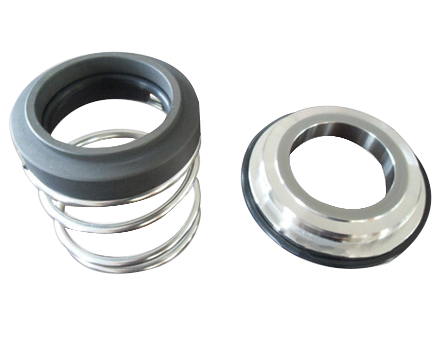A mechanical seal is a device that helps join systems or mechanisms together by preventing leakage (e.g. in a pumping system), containing pressure, or excluding contamination. The effectiveness of a seal is dependent on adhesion in the case of sealants and compression in the case of gaskets.
The mechanical seal essentially consists of two flat, annular sliding surfaces that are pressed together. One sliding surface is fixed to the stationary machine casing, while the other sliding surface is fixed to the rotating shaft. The medium to be sealed, which is generally in contact with the outer edge of the sliding surfaces, penetrates the gap between the sliding surfaces, forming a lubricating film, and emerges at the inner edge as leakage. The pressure differential to be sealed is established in the radial direction. In its simplest form, a mechanical seal can be imagined as a collar that is arranged on, and rotates with, the shaft.
A mechanical seal is a machine element made to seal the passage point of a rotating part (usually a shaft) through a wall (usually the machine casing). Features of the mechanical seal are two surfaces sliding on each other – usually arranged at right angles to the rotational axle – which are pressed together by axial forces. Between the sliding surfaces is a liquid or gaseous lubricating film.
Every mechanical seal possesses five basic elements:
One ring (usually the seal face) circulating synchronously with the rotating part (shaft)
Secondary seal (usually O-ring) between shaft and ring
A stationary ring (usually the stationary seat) arranged in the stationary part (casing)
Secondary seal (usually O-ring) between these parts
Spring for the seal face
temperatures from -50°C to +220°C and sliding velocities of up to 20 m/S (vg).

©Copyright 2020 Apollo Sealing Industry. All right reserved.
Website Developed by: Virender Yadav